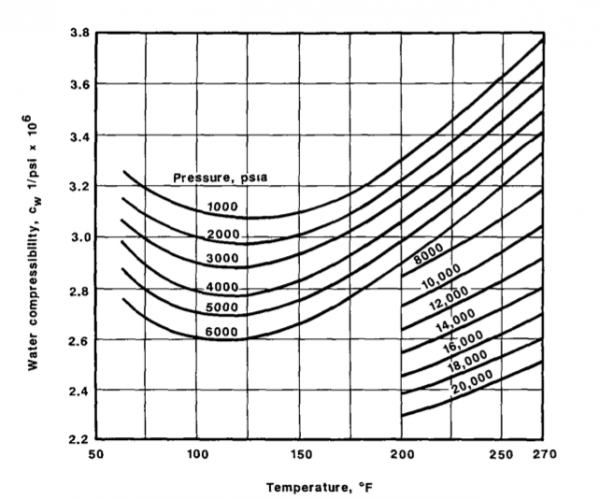Difference between revisions of "Water compressibility"
From wiki.pengtools.com
(Created page with "__TOC__ ==Water compressibility== The water formation volume factor represents the change in volume of the brine as it is transported from the reservoir conditions to surface...") |
|||
| Line 1: | Line 1: | ||
__TOC__ | __TOC__ | ||
==Water compressibility== | ==Water compressibility== | ||
| − | The water | + | The formation water (brine) isothermal compressibility data is published in '''1990'''. |
| − | + | [[File:Water compressibility data.png|thumb|right|600px|Water compressibility data <ref name= M1990/>]] | |
| − | |||
| − | [[File:Water compressibility.png|thumb|right|600px|Water compressibility]] | ||
==Math and Physics== | ==Math and Physics== | ||
Revision as of 05:39, 2 October 2020
Contents
Water compressibility
The formation water (brine) isothermal compressibility data is published in 1990.

Water compressibility data [1]
Math and Physics
where
Application range
The correlation is valid through the full range of solids concentrations, temperatures to 260F, and pressures to 5000psia[2].
Example. Calculating water formation volume factor
Example source [1]
Input data
Calculate water formation volume factor at 3176 psia and 165°F?
Solution
Nomenclature
 = water formation volume factor, res bbl/STB
= water formation volume factor, res bbl/STB = pressure, psia
= pressure, psia = Temperature, °F
= Temperature, °F = pressure correction, res bbl/STB
= pressure correction, res bbl/STB = temperature correction, res bbl/STB
= temperature correction, res bbl/STB
See also
References
- ↑ 1.0 1.1 1.2 McCain, W.D. Jr. (1990). Properties of Petroleum Fluids (2 ed.). Oklahoma: PennWell Corp. ISBN 978-0878143351.
- ↑ McCain, W.D. Jr. (1991). "Reservoir-Fluid Property Correlations-State of the Art"
 . Society of Petroleum Engineers (SPE-18571-PA).
. Society of Petroleum Engineers (SPE-18571-PA).






